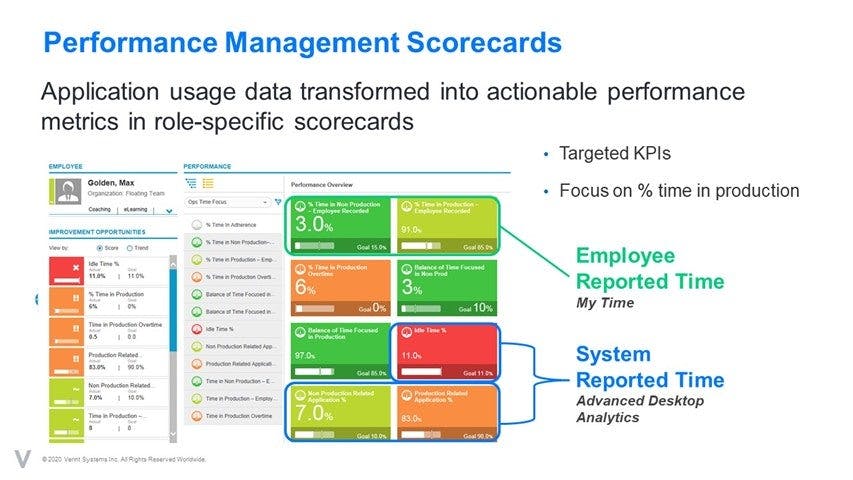Measuring and Managing Remote Employee Productivity


Recently we held a webinar with Harvard Business School professor Prithwiraj (Raj) Choudhury to learn from his “work from anywhere” research, which is appearing in the November/December issue of Harvard Business Review: Our Work From Anywhere Future, as well as an HBR podcast.
Benefits and Challenges of Work-From-Anywhere
Raj shared that work-from-home and work-from-anywhere share similar benefits and challenges, but work-from-anywhere gives employees what he calls “geographic flexibility,” i.e., the ability to work from anywhere there is internet connectivity. For example:
- Older workers could choose to live in Florida as they ease into their retirement years, or choose to work closer to where their grandchildren live.
- Likewise younger adult workers may choose to live closer to family to help with aging parents, or for a support network for their young children.
- Anyone can take advantage of choosing to work in a lower-cost-of-living area, effectively giving themselves a raise.
Raj’s research shows that organizations that embrace remote employees and work-from-anywhere benefit from:
- Higher productivity
- A broader talent pool
- Higher employee retention
- Reduced real estate costs.
However, challenges with an all or mostly remote workforce include:
- Need for higher collaboration and communication
- Higher learning costs, as employees can’t just observe a colleague to learn what to do
- A lack of socialization and potential feelings of isolation and of not belonging/fitting in.
Making it Work
To make a remote workforce successful, Raj says you need a number of operational management processes in place, including processes around security, data privacy, mentoring, and more. Raj and Verint’s Craig Seebach and Nicole Nevulis focused on Raj’s pick for the Top 3 processes you need in place to help ensure remote employees thrive:
- Measuring and managing productivity
- Codifying and distributing knowledge
- Standardized communication tools.
For today, we’ll be exploring the first process: measuring and managing employee productivity.
Measuring and Managing Productivity
Raj shared that for remote employees, the two key items to measure are output (# of calls handled, # of items processed) and feedback (from customers, from peers)—not hours of screen time or number of zoom meetings attended.
Raj says there’s a place for measuring input (# of hours), but that data is for HR to use in ensuring employees are balancing work-from-home and life—not working too many hours or skipping breaks. This level of detail is not beneficial for the manager to see.
Craig and Nicole had a different perspective.
Inputs vs. Outputs
They agreed that employees should be measured on outputs and feedback, but explained that there is a use case for sharing how employees are spending their time with managers. Solutions such as Verint’s Operations Visualizer can capture granular data into how employees are spending their time, regardless of location. This data is then transformed into key metrics to see if, directionally, time is being spent productively. It also gives managers a virtual, walk-around management capability.
For example, in the screenshot below you can see that the data is grouped into categories such as percent of time spent in production-related applications, non-production applications, idle, or on personal time such as breaks, lunches and vaca. Managers and employees can quickly see how they are performing against expectations, and take corrective actions.

The challenge is to balance inputs and outputs to get a holistic view of employee productivity and performance. Craig shared a customer example.
One of the largest and lowest cost health plans operating in a single state had a number of Verint solutions already deployed across its contact centers. Yet, upwards of 900 full-time employees worked in their back office without similar tools to help measure and manage performance. Disparate data sources, a myriad of manual processes, and little transparency and automation resulted in limited information on cause and effect.
With Verint Operations Visualizer, they were able to create operational visibility for both managers and employees, giving them insight into how time was spent, and identify untapped capacity within the operations. The insurer was able to improve productivity by 15%, increase utilization and capacity by 3.5%, and save $1.25 million over a one-year period.
Best Practice Approach
Nicole explained that there was a caveat to sharing this data with managers, and that is they need to be coached on how to use the data for good, not evil.
The data should be used to coach employees and help them modify their behavior so they can reach their productivity goals. It should not be used punitively, for example, by haranguing an employee for spending 5 minutes on Facebook during the day.
In fact, many organizations using Operations Visualizer limit the level of granularity managers see, which removes this temptation and also protects employee privacy. They also often establish a center of excellence to ensure all managers are trained in the same way—and to share best practices among them.
What Not To Do
Craig pointed out that in response to the sudden shift to work-from-home by many organizations due to the pandemic, a number of employee monitoring solutions quickly gained attention. Unfortunately, many of these solutions were very intrusive, performing such actions as turning on laptop webcams to verify the employee was at their desk and/or capturing screenshots of the employee’s desktop.
These actions are very intrusive, invade an employee’s privacy, and strongly convey a lack of trust in the employee/company relationship. Verint’s approach to measuring and managing remote employee productivity is more sensitive, working to understand behavioral trends at a more macro level.
Raj agreed that there needs to be sensitivity and employees need to understand why the data is being collected—and importantly, what it will be used for. If there is even a hint of Orwellian motivation, the trust between employee and manager will be broken, and employees will leave at the first opportunity.
Want more insights? Watch the on-demand webinar: 5 Ways to Help Your Employees Work from Home.